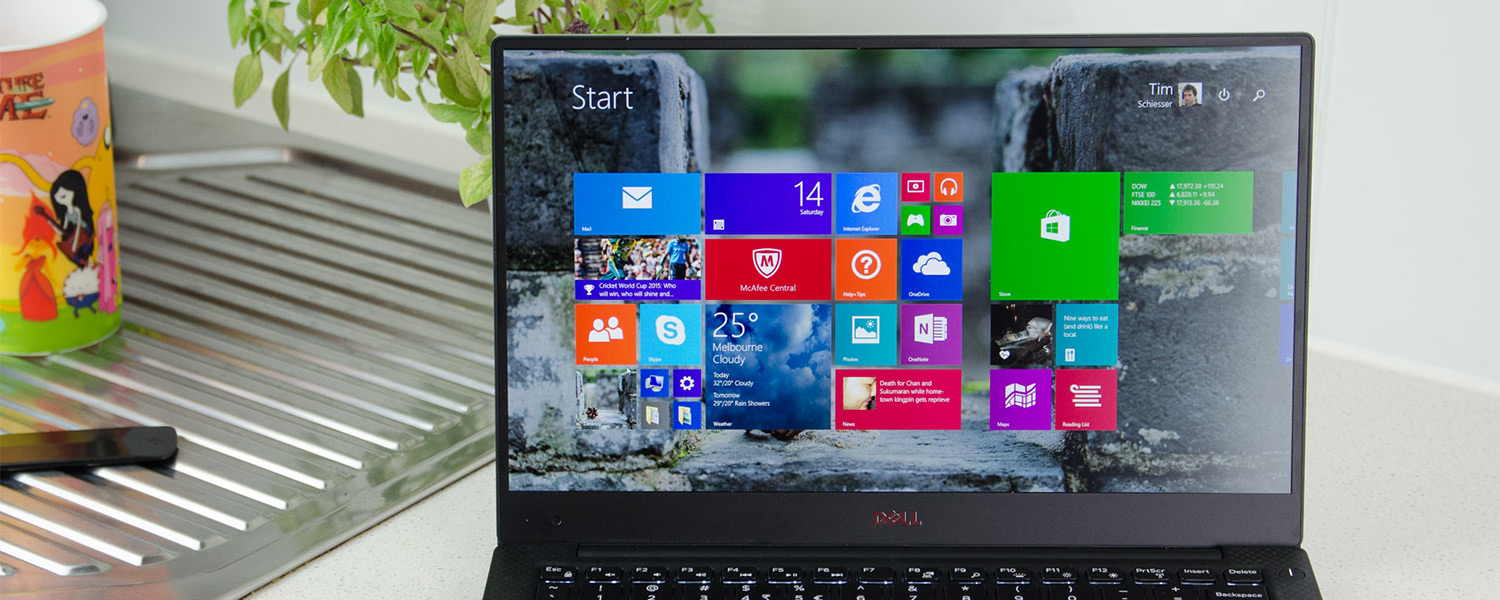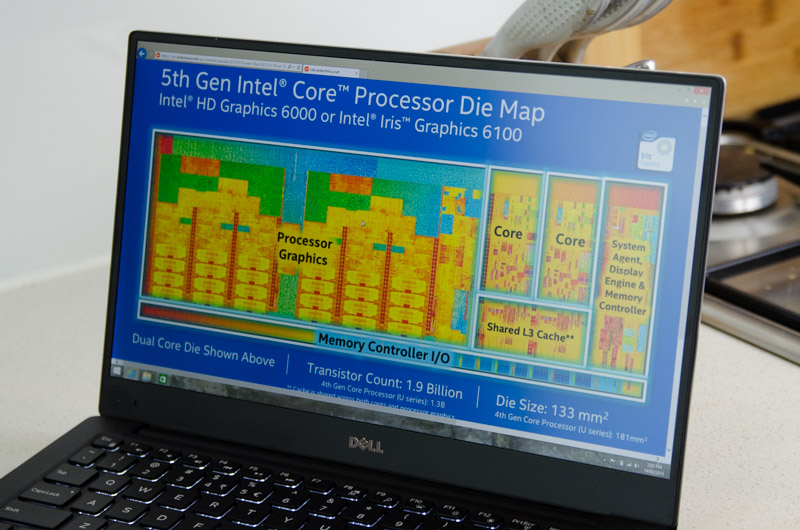Hardware Overview and CPU Performance
The Dell XPS 13 is the first laptop I've had hands-on time with, and one of the first laptops on the market in general, to use one of Intel's new Broadwell-U 5th-generation Core processors. Unlike Core M, which targeted a 4.5W TDP, the Broadwell-U line is designed for more powerful computing and come as either 15W or 28W parts.
In the XPS 13 we're seeing a 15W Intel Core i5-5200U, which is a mid-table part with reasonable clock speeds designed primarily for efficiency. The nominal TDP (15W) is identical to Intel's last-generation Haswell-U processors, such as the popular i5-4200U/4210U, but with better efficiency. Intel targets power consumption of 7.5W in the 5200U's 'down' state of 600 MHz, a decent improvement on the 4210U's 11.5W/800 MHz down state. Naturally power consumption will be even less when the CPU enters a low power, idling state.
Efficiency improvements have also allowed Intel to raise the base clock speed of their Broadwell CPUs when targeting a 15W TDP: The i5-5200U is clocked at 2.2 GHz across two cores, up from 1.7 GHz in the i5-4210U. Single-core Turbo Boost clock speeds are the same on both CPUs, at 2.7 GHz. Intel also states that their new Broadwell CPU can Turbo Boost up to 2.5 GHz on two cores. L3 cache remains constant at 3 MB for all Core i5 products.
With this information in hand, the new i5-5200U should either be more efficient than the i5-4210U at similar levels of performance, or faster with similar levels of power consumption. Both are great results for Intel's low-power mobile CPUs.
On the GPU side, there are a number of improvements. The i5-5200U, like all Broadwell-U 5x00 products, comes with Intel HD Graphics 5500, up from HD Graphics 4400 on the equivalent Haswell processors. The main change here is an increase in execution units from 20 to 24, which essentially provides better performance at similar clock speeds. The clock speed range for the HD 5500 GPU in the 5200U is 300 to 900 MHz, slightly down from the 200 to 1000 MHz range in the 4210U.
I will briefly mention that the XPS 13 comes with two other Broadwell CPU options. The entry-level model comes with a Core i3-5010U (2.1 GHz base, no Turbo, HD 5500 GPU at 850 MHz), and the top-end model is available with a Core i7-5500U (2.4 GHz base, 3.0 GHz single-core Turbo, HD 5500 GPU at 950 MHz). Most models you'll see come with the i5-5200U, though if you're after a bit of extra power, the Core i7 model should be around 10% faster on the CPU side and 5% faster on the GPU thanks to those raised clock speeds.
Aside from Intel's new Broadwell CPU, the XPS 13 comes with either 4 or 8 GB of DDR3L-RS 1600 MHz memory. Unfortunately there's no 16 GB option for the high-end configurations, though I suspect 8 GB would be fine in most situations. I would advise against opting for simply 4 GB of RAM as that might become limited in even basic situations like web browsing with many tabs open. The model I received to review was equipped with 8 GB and that was largely adequate.
Storage starts at a 128 GB M.2 solid state drive, with 256 GB available as an optional extra. The model Dell sent over came with 256 GB, and a quick inspection revealed it to be a Samsung model. Upgrading from 128 GB to 256 GB will cost you $100.
Wireless connectivity is provided through Dell's Wireless 1560 chip, which includes Wi-Fi 802.11a/b/g/n/ac support on 2.4 and 5.0 GHz bands. There's also Bluetooth 4.0 LE support. During my testing I was pretty impressed with the Wi-Fi range of the XPS 13, although throughput wasn't as high as I would like for local file transfers.
Anyway, let's get on with the all important benchmarks to see how the i5-5200U stacks up to the i5-4210U, which luckily I've already benchmarked in the Alienware 13.
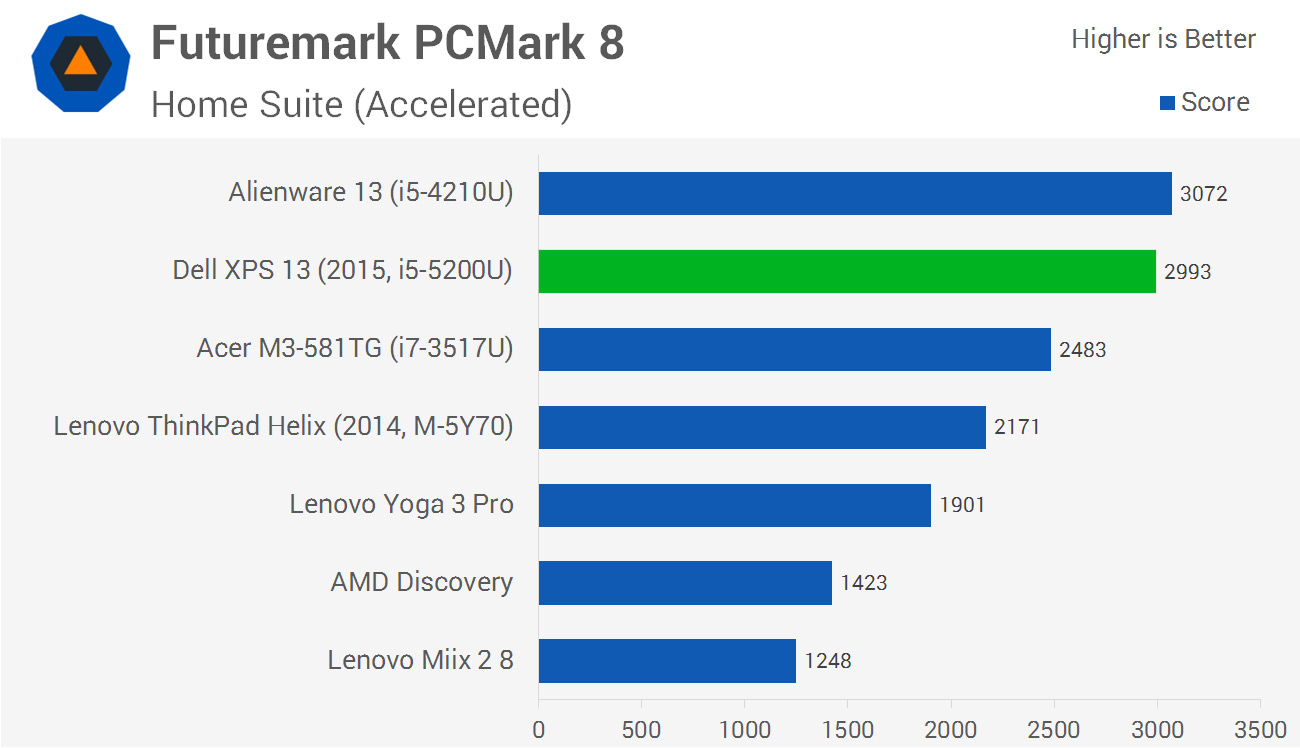

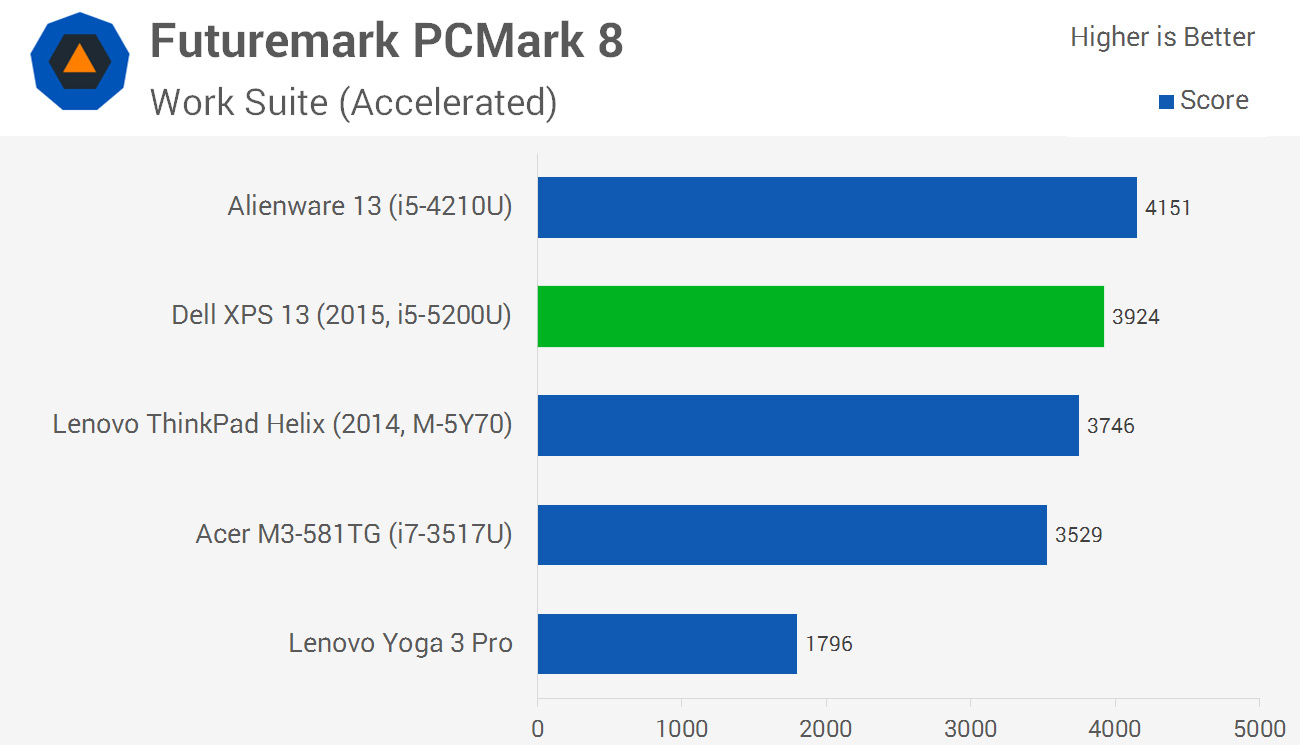
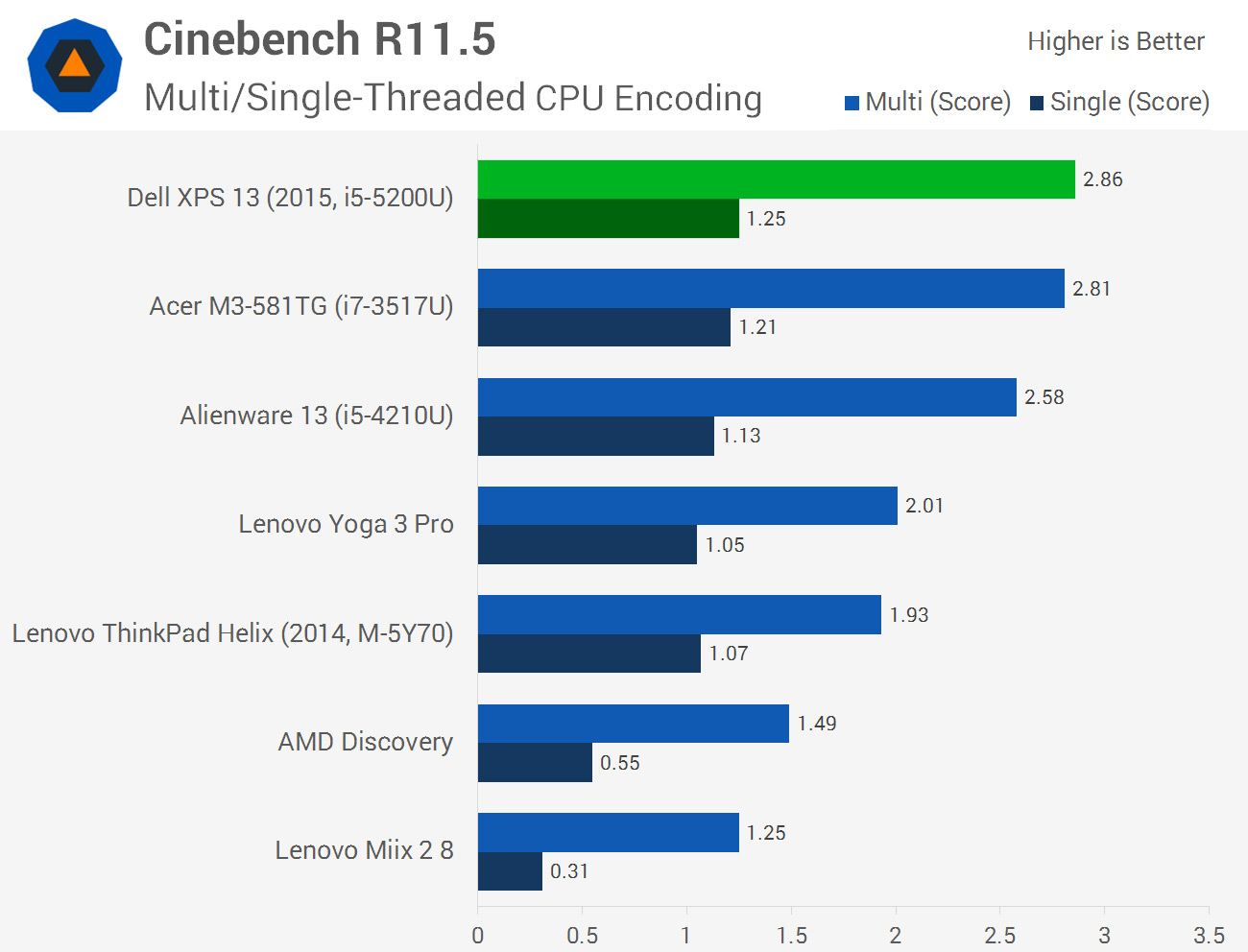


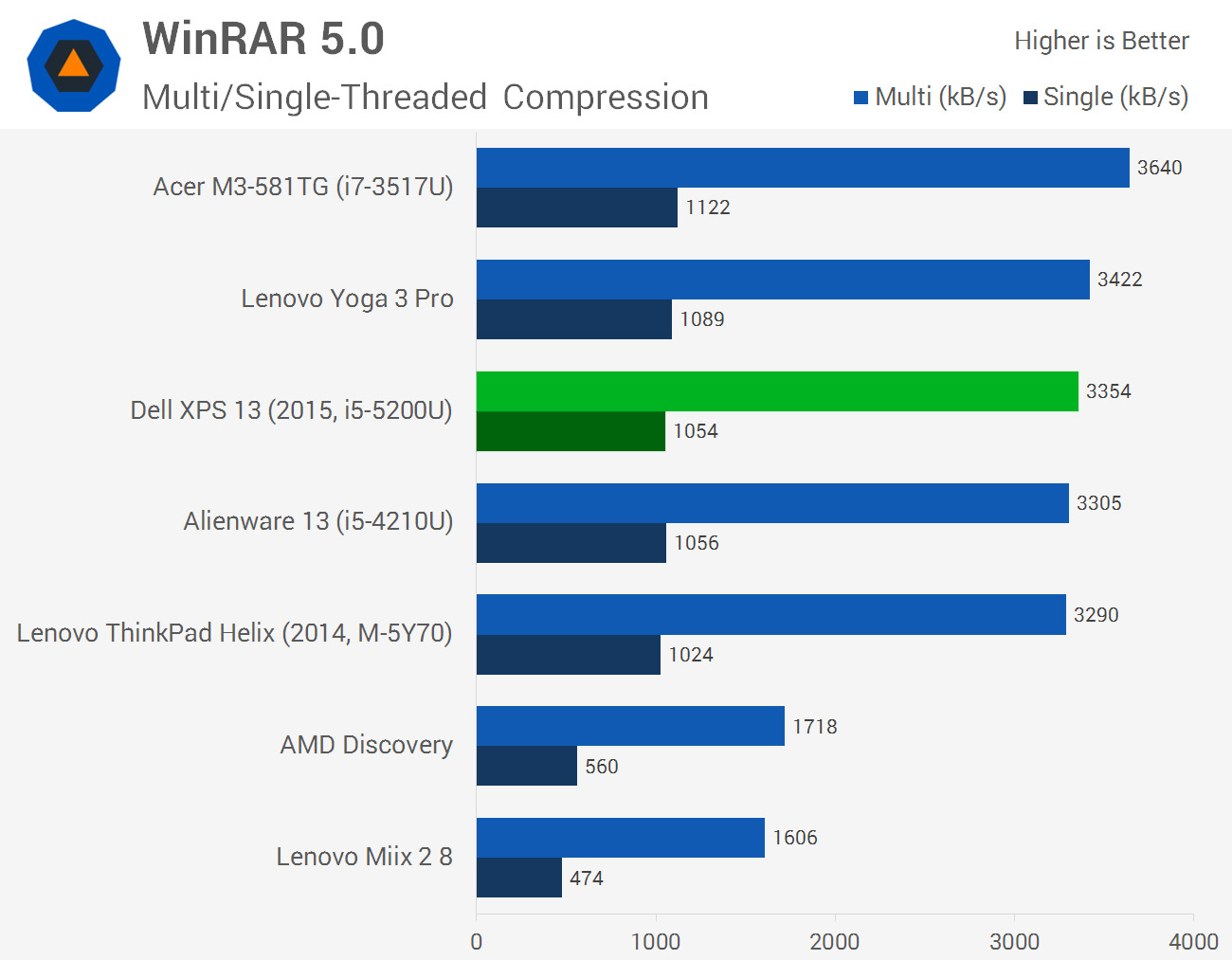

In CPU constrained benchmarks, on average we're seeing an increase in performance of 7% compared to the i5-4210U. This is slightly higher than the increase in two-core Turbo Boost clock speeds of 4%, so other minor improvements (longer sustained Turbo, higher base clocks) will have contributed to this fairly respectable performance increase.
I didn't see any gains higher than 11% over Intel's last gen part in the CPU department, so improvements in the range of 5-10% are as good as it gets.
As a quick note on PCMark results, which measure overall system performance, the dedicated GPU in the Alienware 13 (the Nvidia GeForce GTX 860M) contributes to a minor score improvement in the OpenGL accelerated test over Intel's integrated graphics. This is why the Alienware 13 appears to outperform the XPS 13 in these tests, despite the XPS 13 having better CPU performance in general.
Compared to the Core M-5Y70, which is Intel's low-power 4.5W Broadwell part, the i5-5200U is 36% faster in CPU-bound tasks on average. Although the TDP of the Core i5 CPU is much higher, indicating generally lower efficiency than Core M, you're getting significantly more performance out of it.
